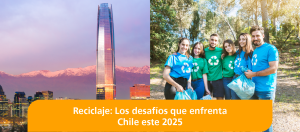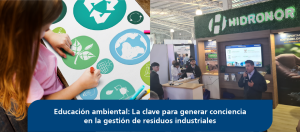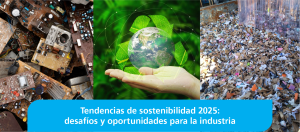
We highlight our commitment to sustainability and the circular economy within the framework of the 20 years of Decree 148, an event organized by the University of the Americas and Codexverde.
It is estimated that Chile produces close to 19 million tons of waste per year, according to data from the Ministry of the Environment. Of this waste, approximately 650,000 tons are hazardous. However, only 21% of non-hazardous waste was recovered in 2010, which underlines the need to improve recovery rates and management of this waste in the country. Furthermore, there are no official figures that reflect the recovery rates of hazardous waste, which makes it difficult to evaluate the effectiveness of current policies.
In this context, and as a way to visualize this problem, last Monday, October 28, the online seminar “20 Years of Decree 148: Balance and Challenges for the Management of Hazardous Waste” was held, an event that brought together experts and companies in the sector to discuss the progress and challenges in hazardous waste management in Chile.
Commitment to Sustainability
Carolina Escandón, Head of Sales in the Central Zone of Hidronor Chile, was one of the notable speakers. In his speech, he highlighted that, although in 2010 only 21% of non-hazardous waste was recovered, it is crucial to increase recovery rates, especially in hazardous waste, which represents approximately 650,000 tons annually without official figures to support its recovery.
He also highlighted that “at Hidronor, with more than 25 years of experience in the sector, we have established ourselves as a benchmark in the management of hazardous waste. We have been managing hazardous waste for more than 25 years. We have managed and treated more than 500,000 tons of contaminated soil. We have received and managed more than 7 million tons of industrial and hazardous waste in our plants, with more than 2,500 committed clients.”
Transformation towards the Circular Economy
Under the motto “Hazardous Waste Transformation: From Safe Disposal to the Circular Economy”, our company presented its innovative approach to convert waste into resources.
In this context of waste recovery, Escandón assured that “our company, annually, generates more than 5,000 tons per year of liquid alternative fuel. We manage more than 3,000 tons of plastics and packaging, more than 1,500 tons of metals and more than 800 tons of batteries.”
Challenges in Waste Management
The seminar also served as a platform to raise important challenges in waste management. Escandón stressed the need to promote culture and education regarding hazardous waste, as well as increase recovery rates for industrial and hazardous waste. The SIDREP statement, which seeks to improve the information available on waste management, was one of the topics discussed.
At Hidronor we reaffirm our commitment to contributing to the care of the environment and the sustainable development of the country through management practices that not only comply with current regulations, but also promote a cleaner and safer future for all.







